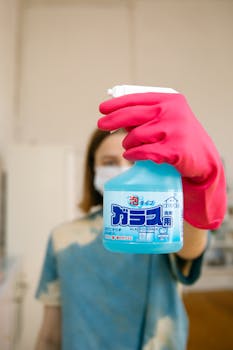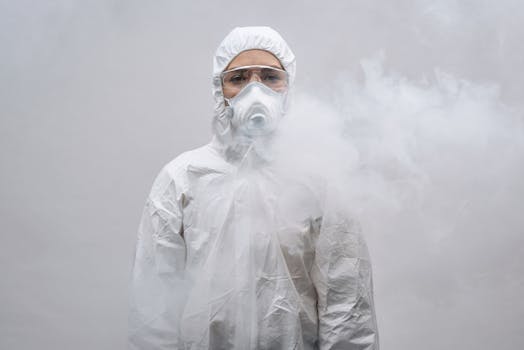Why You Should Never Mix Bleach with Other Cleaners
Why You Should Never Mix Bleach with Other Cleaners

Bleach is a powerful disinfectant, commonly used to clean and sanitize surfaces—but mixing it with other cleaners can be extremely dangerous. From toxic gas release to potentially explosive reactions, the risks are real and well-documented. In this post, we’ll break down the dangers of combining bleach with common household substances, the serious health effects that can occur, and the safety tips you need to protect yourself and your home.
⚠️ Bleach should always be used alone—never mix it with any other cleaner.

What Makes Bleach Dangerous to Mix?
Bleach contains sodium hypochlorite, a highly reactive chemical that can produce toxic gases or harmful compounds when combined with other substances. While bleach by itself is effective for disinfecting, improper use can turn it into a chemical hazard.
What Not to Mix with Bleach (and Why)
1. Ammonia = Chloramine Gas
Mixing bleach with ammonia produces chloramine vapors, which are highly irritating and dangerous when inhaled.
Health Risks Include:
- Coughing, chest pain, and nausea
- Watery eyes and throat irritation
- Shortness of breath
- Severe cases: pneumonia or fluid in the lungs
❌ Common products that contain ammonia: glass cleaners, multi-surface sprays, and urine (when cleaning pet messes).
2. Acids (e.g., Vinegar, Lemon Juice) = Chlorine Gas
Combining bleach with acidic cleaners like vinegar releases chlorine gas—used in chemical warfare for a reason.
Health Risks Include:
- Burning eyes and throat
- Vomiting and difficulty breathing
- Risk of lung damage or death at high exposure levels
❌ Many natural cleaners include vinegar—don’t assume they’re safe to use with bleach!
3. Alcohol = Chloroform
When bleach mixes with alcohol (like rubbing alcohol or alcohol-based cleaners), the result can be chloroform—a sedative and potential carcinogen.
Health Risks Include:
- Dizziness, nausea, and disorientation
- Loss of consciousness
- Nervous system, liver, and kidney damage in high doses
4. Hydrogen Peroxide = Oxygen Gas & Explosion Risk
Combining bleach with hydrogen peroxide leads to a violent chemical reaction, releasing oxygen gas rapidly and creating explosion risks, especially in confined spaces.
Do not mix these under any circumstances.
General Safety Tips When Using Bleach
✅ Read Labels Carefully – Always check product labels for warnings about mixing with bleach or other chemicals.
✅ Use One Product at a Time – Never apply multiple cleaners to the same surface unless you rinse thoroughly between products.
✅ Ensure Proper Ventilation – Open windows and doors when using bleach to avoid buildup of fumes.
✅ Wear Protective Gear – Use gloves and eye protection to limit skin and eye exposure.
✅ Store Safely – Keep bleach and other cleaners clearly labeled and stored separately to prevent accidental mixing.
Final Thoughts: Clean Safely—Don’t Mix Cleaners
Bleach is effective on its own—but when mixed with the wrong products, it can become dangerously toxic. From chloramine gas to chloroform and chlorine gas, these reactions aren’t just unpleasant—they can be life-threatening.
Always use bleach safely, independently, and in a well-ventilated area. For a healthier home, stick to one cleaner at a time, and when in doubt—don’t mix.
Sources: Information in this post was gathered from reputable sources including the Washington State Department of Health, Chemistry World, Wikipedia, Southern Living, and the Toxics Use Reduction Institute (TURI), all of which detail the chemical reactions and health risks associated with mixing bleach and other household cleaners
